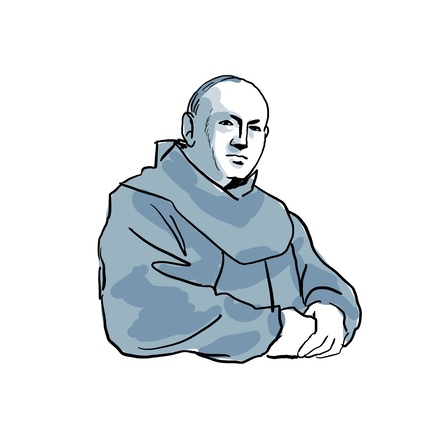
1. The Franciscan of Bourges
As you make your way down Rue Bourbonnoux, let me introduce you to a local legend: the Franciscan of Bourges. During World War II, Bourges sat just a few kilometers from the demarcation line. Read more
Tour
3,2 km
1h20
22 audios
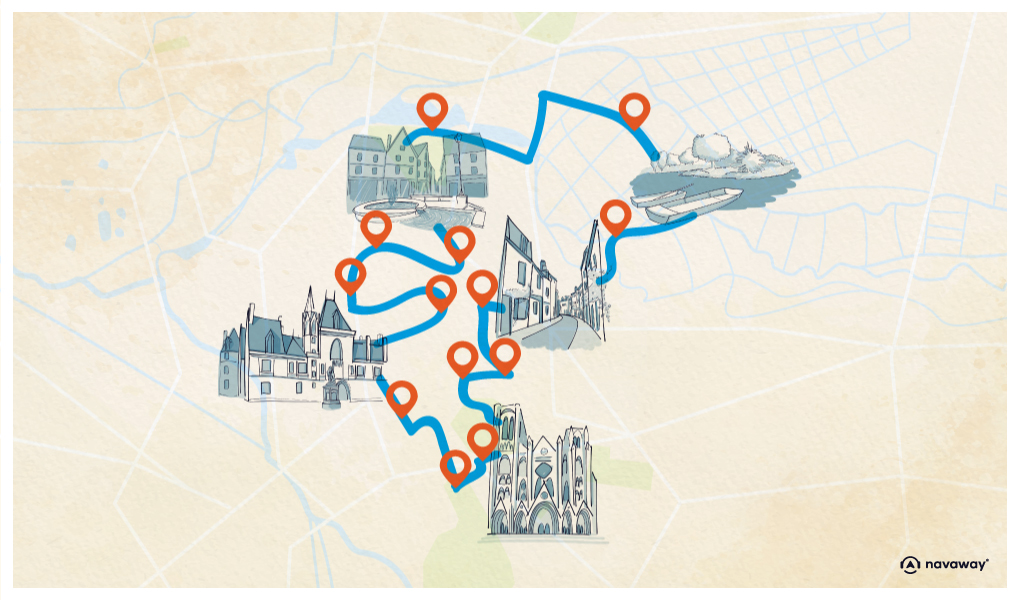
Text version
Off to the capital of the Duchy of Berry! Calling all history buffs and architecture lovers – Bourges is about to blow your mind! This medieval city is the birthplace of Jacques Coeur, appointed Master of the mint by King Charles VII. Wander its cobbled streets, charming squares, and feast your eyes on the half-timbered houses along the way. Get ready to be amazed by the city’s stunning marshlands, just a stone’s throw from the historic center, its mansions with their one-of-a-kind architecture, and, of course, its breathtaking cathedral, one of the most beautiful in France, classified as a UNESCO World Heritage Site. It’s a city steeped in history and a must-see. But back to the present! Every year, the city hosts the famous Spring music festival of Bourges, attracting thousands of visitors from all over France. Enough introductions; lace up your walking shoes and let’s get started on the tour!

As you make your way down Rue Bourbonnoux, let me introduce you to a local legend: the Franciscan of Bourges. During World War II, Bourges sat just a few kilometers from the demarcation line. Read more
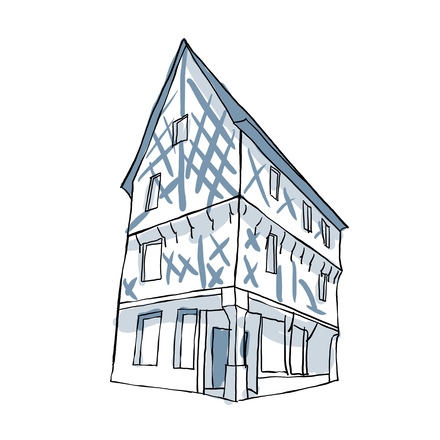
Let's make a quick stop here and turn right to observe the building we've just passed, right at the corner of Rue Joyeuse and Rue Bourbonnoux. Now, this house has a very special feature: its corner post is adorned with three carved flutes! Read more
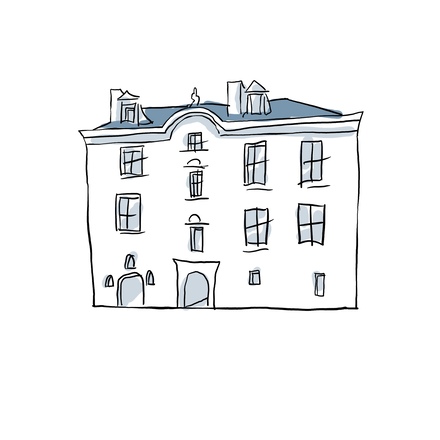
On your left, behind the gates, you'll find the Hôtel Lallemant, a former private mansion. Today, it houses the fascinating Museum of Decorative Arts. This beautiful building is a fine example of French Renaissance architecture, with some Gothic touches here and there. Read more

Welcome to the charming Gordaine square, one of the liveliest and most picturesque spots in Bourges, featuring half-timbered houses, crowded terraces and stores of all kinds! Back in the 15th century, this is where you'd find butcher's and fishmonger's shops, Read more
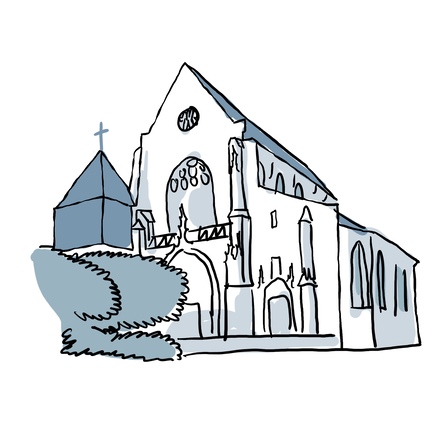
We've reached the far edge of the city's historic center. Right across from you is the church of Saint-Bonnet, built in the 13th century. Though outside the city walls from back then, it wasn’t spared by the fire that ravaged Bourges in 1487. Read more
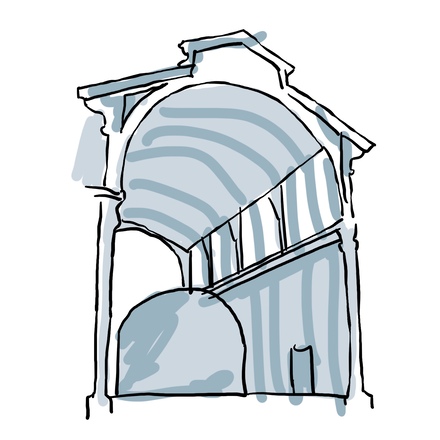
Just to your left, you'll see the Halles Saint-Bonnet, a large historic covered market. Built in the late 1800s, it was originally used for grain trade, as there was already another market set up in the Halle au blé. It was inaugurated in 1886, boasting a style quite unlike any other in the region Read more
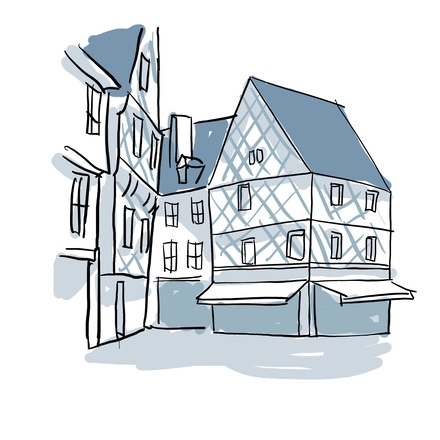
Rue Mirebeau is one of the main shopping streets in Bourges, stretching from Gordaine Square to Place de la Barre. Packed with shops housed in charming buildings, it's teeming with life, daily welcoming shoppers from all over the city! Read more
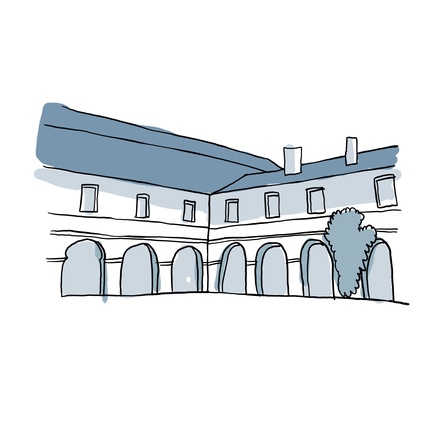
Take the little passageway on your right into what's known as Espace Calvin, once home to the Augustinian convent dating from the 13th century. Feel free to peek inside and discover a secret courtyard tucked away between the houses of the historic center! Read more
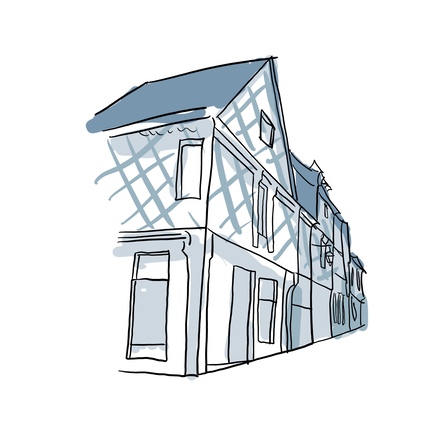
You've reached Rue Coursarlon, one of the most bustling streets in Bourges, and also one of the oldest. It's been around since Roman times, as one of the main thoroughfares in Bourges. Then, in the Middle Ages, it became one of the city's most popular shopping streets. Read more
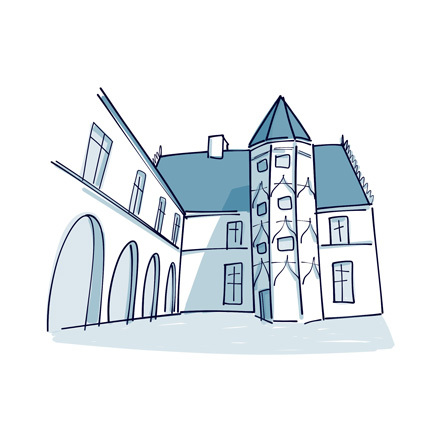
This private mansion was built in the 15th century to serve as Town Hall, just after the Great Fire of Bourges that ravaged the city in 1487. It rests on the remains of the Gallo-Roman ramparts, and its fine, elegant architecture is reminiscent of the nearby Jacques Coeur Palace. Read more
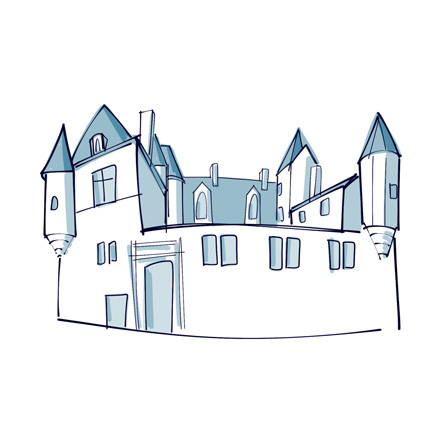
Built in the 16th century, this magnificent building is a fine example of early French Renaissance architecture. It was bought by Jacques Cujas in 1585, who turned it into a remarkable mansion and gave it its name. Read more
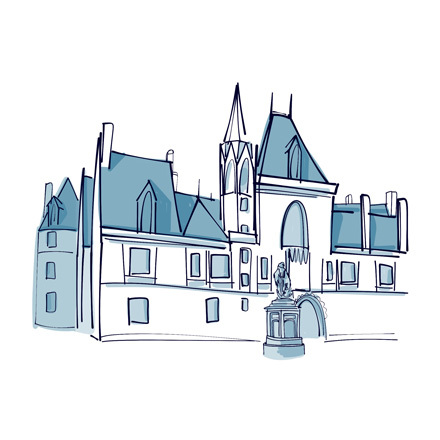
Second in importance only to the cathedral, this magnificent palace traces the footsteps of Jacques Coeur, merchant, adventurer and, above all, master of the mint under King Charles VII since 1439. The Palace is built in the flamboyant style of Gothic architecture and it's considered a true 15th-century masterpiece. Read more
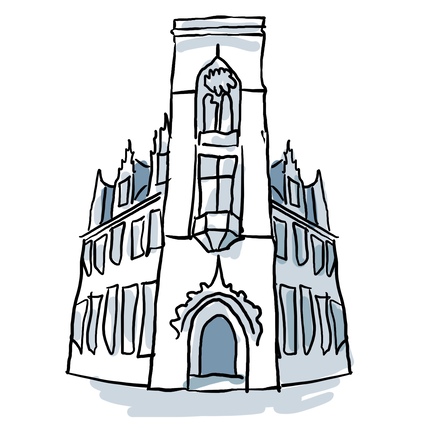
Check out the impressive building on your left. It's the Hôtel des Postes. In 1912, the decision was taken to build a structure to house the Post Office, to the designs of architect Henri Tarlier. As war broke out in 1914, construction work was halted, and not resumed until 1919. Read more

As you make your way up the Rue Moyenne, allow me to tell you about one of the city’s' most renowned events: its music festival. It's called Printemps de Bourges, meaning "Springtime in Bourges", and it's actually the first major festival of the year in France, happening every April. Read more
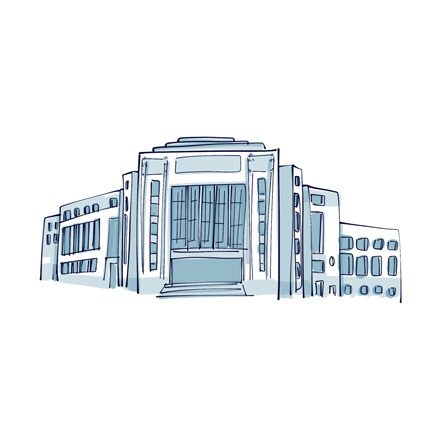
Built between 1936 and 1938 by local architect Marcel Pinon, this stunning edifice in light red brick started as a grand banquet hall. By the 60s, it had transformed into a go-to happening spot with performance halls, art shows, and even a disco! Read more
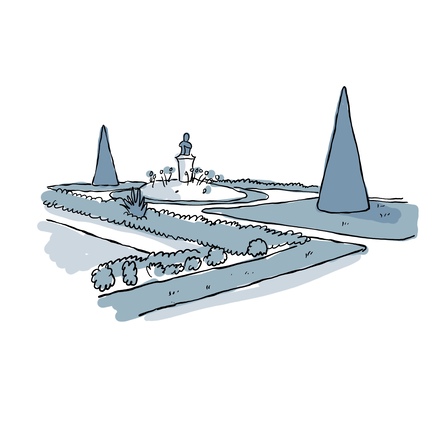
Welcome to the Garden of the Archdiocese, a Bourges favorite! Nestled at the heart of the historic center, this tranquil spot is perfect for unwinding. Tourists relax under the shady trees and students hangout or have picnics on sunny summer days. Read more
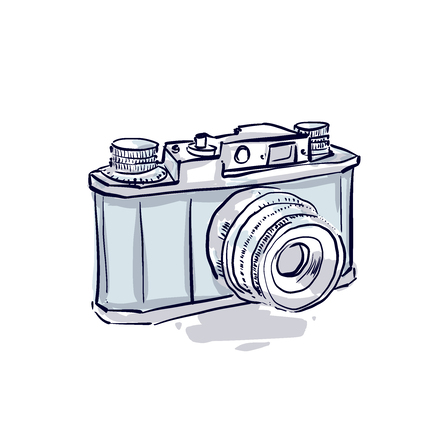
Breathtaking, isn't it? This view is simply unbeatable! In the foreground, you've got the magnificent French formal garden designed in 1731 by a gifted gardener. And then, right behind it, there's the majestic Saint-Étienne cathedral, a sight that leaves everyone in awe! Read more

Opposite the cathedral is the Musée des Meilleurs Ouvriers de France, aka the Museum of The Finest Craftsmen of France. It's housed in the former archiepiscopal palace dating back to the 17th century. This museum traces the history of the aforementioned competition, Read more
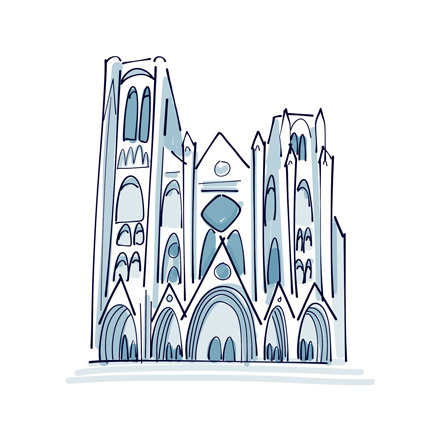
Saint-Étienne Cathedral is the crown jewel of Bourges and it’s sure to leave visitors speechless! Built between the 12th and 13th centuries, it was way ahead of its time. The builders used highly modern techniques to create an edifice with no transept, in a brand new Gothic style, Read more
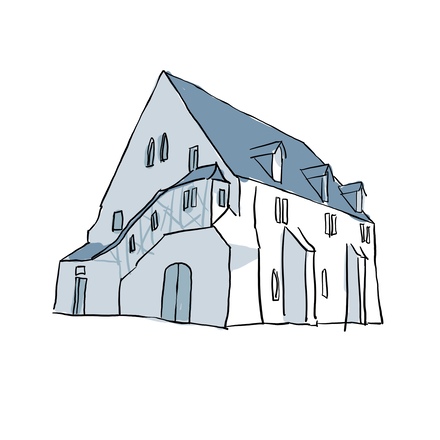
Dating back to the Middle Ages, the Grange aux Dîmes, that is, the Tithe Barn, certainly lives up to its name. From the 13th century onwards, it was used to store the taxes paid by peasants, known as tithes. This tax on agricultural income was levied by the Catholic Church; Read more

This is the old shopping street of Bourges, where, back in medieval times, people came to buy all sorts of things from the city's craftsmen, shopkeepers and merchants. Authentic and full of charm, Rue Bourbonnoux features magnificent timber-framed houses dating from the 15th and 16th centuries, Read more
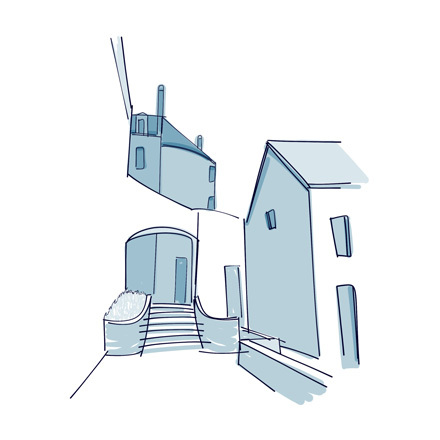
Tucked away amidst the local houses, this little passageway takes you back to Gallo-Roman times, when Bourges was known as Avaricum. Here, you can see some remarkably well-preserved remains of the ramparts built in the 4th century to protect the city from enemy attacks. Read more


Discover Bourges with app
An interactive guide through the most beautiful streets, squares, and districts
22 fun audioguides full of historical facts, anecdotes, and legends
On this guided tour, we’ll be passing through the marshes of Bourges, covering only a small part of them. If you’d like to explore them further, be sure to come back and get a closer look at these little gardens on the water, just a stone’s throw from the city center. You can visit
Fancy a relaxing stroll or bike ride? Follow the Rocade Verte for a scenic path alongside the Berry Canal, perfect to unwind while immersing yourself in nature. It will take you around the Auron lake, which you can also tour if you wish.
If you’re staying in the area for a while and want to see the sights, I’d suggest a visit to Meillant castle, just 40 km from Bourges. Dating back to the 13th century, it beautifully features elements of both flamboyant Gothic and Early Renaissance Louis XII architectural styles. The castle is privately owned, but guided tours are available. As the number of places is limited, it is advisable to book your visit via the dedicated website.
Just a few minutes from the castle, you’ll also find one of the region’s must-see sights: the Abbey of Noirlac. Dating back to the 12th century, it is one of the best-preserved Cistercian abbeys in France. Admission is subject to a fee, and tickets can be purchased in advance on their website. Make the most of your visit by exploring the Noirlac Bocage Farmland, an exceptional natural site that is home to numerous plant and animal species. You can visit the bocage independently or with a guide.
A little further afield, you’ll find the fascinating Castle of Ainay-le-Vieil. Built in the Middle Ages, this beautiful fortified castle boasts a fine Renaissance residence and a remarkable garden. It is open to visitors from April to October. Admission is subject to a fee.
If you’re heading the other way, towards the north, be sure to stop off at La Borne, a charming village renowned for its pottery tradition dating back to the 12th century. You’re sure to find many craftspeople at work here, and they’ll all be happy to show you their skills. You can also visit the Contemporary Ceramics Center, where artists’ work is on display, and unleash your inner artist by participating in one of its workshops.
If you continue in this direction, you’ll arrive in Sancerre, a picturesque fortified city, perched on a hilltop surrounded by vineyards. Here, you can explore the charming medieval center, conquer hiking trails, and soak in breathtaking views. Be sure to try one of its world-renowned wines, or the famous crottin de Chavignol, a goat cheese produced in the Loire Valley .
Let’s not forget that the Cher department is a haven for wine enthusiasts! Consider also exploring other cities known for their vineyards, like Mennetou-Salon, Reuilly, Valençay, and Quincy. Here’s your chance to visit one or more wineries and taste the local wines!
Last but not least, be sure to visit Apremont-sur-Allier, listed as one of France’s most beautiful villages; it’s less than an hour’s drive from Bourges. Nestled on the banks of the Allier river, it boasts a charming historic center, a majestic castle, and a botanical park designated as “Jardin Remarquable”, aka “Remarkable garden”, a distinction awarded to gardens with remarkable history and aesthetics.
200 audioguided tours for cities all around the world
DownloadOur rating
Budget
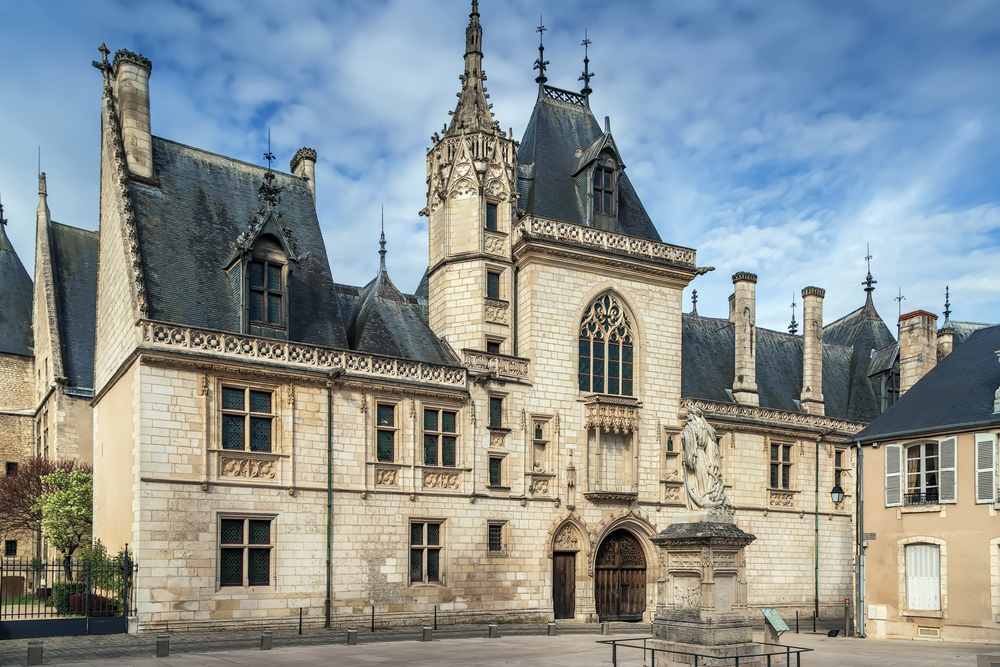
Description: Unmissable in the city of Bourges and a true testament to the Middle Ages, the Palais Jacques Cœur is a stunning building. Built in 1443, it belonged to a powerful merchant, adventurer, and even treasurer to King Charles VII. This architectural gem is considered one of the most magnificent examples of flamboyant Gothic civil architecture. Each room in the palace features a unique decorative style. Since 1840, the Palais Jacques Cœur has been listed as a…
Read more
Our rating
Budget
See Our Full Review
Our rating
Budget
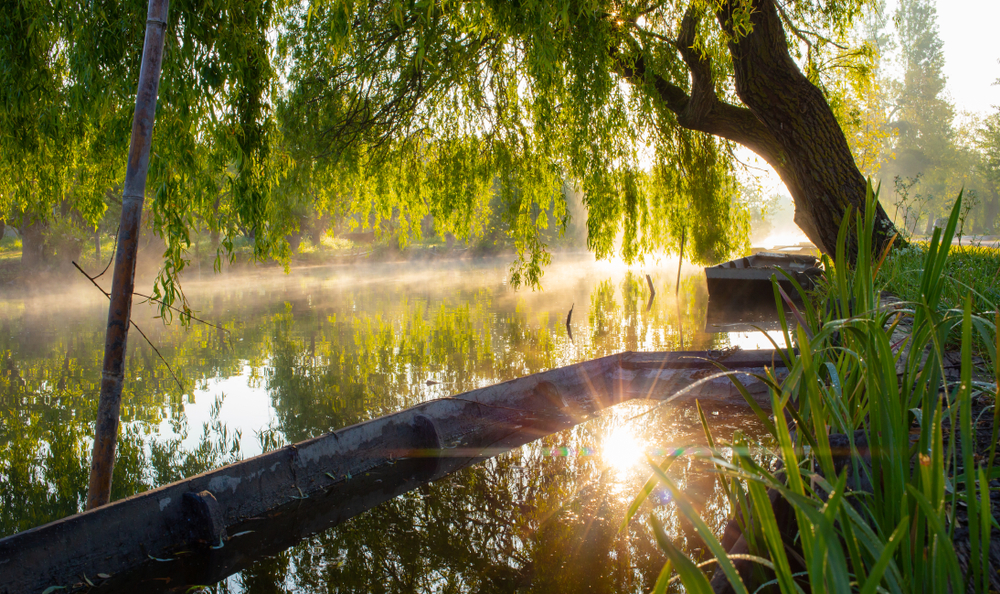
See Our Full Review
During a trip, it always feels like a must to visit a restaurant and taste the local specialties. And in Bourges, there is no shortage of them. Coq en barbouille, citrouillat, truffiat—the Cher department is full of surprising specialties, not to mention the infamous œuf à la couille d’âne! To enjoy a great meal in Bourges, we recommend heading to the Cathedral of Saint-Étienne, the most famous landmark in the city. Near this splendid cathedral, you will find Rue Bourbonnoux, stretching over several hundred meters. A wide variety of restaurants will surely delight you. If you don’t find what you’re looking for on Rue Bourbonnoux, head to Place Gordaine at the end of the same street, where more restaurants will be ready to welcome you!
Bourges is a city with beautiful architecture, making it a pleasant place to stay. To enjoy a comfortable vacation in the third-largest city in the Centre-Val de Loire region, some neighborhoods stand out. Of course, Vieux Bourges in the city center remains the most charming area. This is where you will find the famous Cathedral of Saint-Étienne, a UNESCO World Heritage site. You’ll be close to cultural sites to visit, and you’ll be able to explore everything on foot. Further north of Bourges and its city center, accommodation prices are more affordable. Near the Jardin des Prés Fichaux, you will find reasonably priced hotels and lodging options. If you stay in this area, the train station will be nearby at the end of your trip, making travel more convenient. You will also have easy access to the city center via public transport.
The Centre-Val de Loire region is world-famous for its countless castles that look like something out of a Disney movie. If you have a car, visiting the Loire Valley castles is highly recommended. From Bourges, it takes about 1 hour and 15 minutes to reach the Château de Chenonceau. Along the way, you’ll pass by other stunning castles that are well worth a stop. You can also take the Jacques Coeur Route, which connects several historic villages. Along this route, you will discover numerous castles such as the Château de la Forêt-Grailly, the Manoir des Griouettes, and more. For a fun outdoor activity with the family, the Tronçais Forest is about 60 kilometers from Bourges. Covering 11,000 hectares, this forest is full of breathtaking landscapes.
Located in the heart of France, Bourges is well-served by the SNCF railway network. From Paris, Bordeaux, or Lyon, the train journey takes a little over two hours, including a transfer from each departure point. If you’re considering flying to Bourges, it’s not the most practical option. Bourges does not have an airport; the closest one is Châteauroux-Centre Airport, about 70 kilometers away. Unless you rent a car upon arrival, you will need to take a train to reach your final destination. If you are traveling by car, Bourges is easily accessible. Its very central location makes it a major crossroads between several national roads and highways.
To avoid renting a car at an excessively high price, the key trick is to book in advance. The longer you wait, the higher the price will be. To save even more, you can check comparison websites such as Rentalcars. Pay close attention to fuel policies. Some rental companies require you to pay for a full tank at the time of booking and return the car with an empty tank.
Bourges is not necessarily a city that attracts massive numbers of tourists. However, in the past two or three years, it has drawn more curious visitors eager to discover the city, its Saint-Étienne Cathedral, and its surroundings. In spring, you can attend the Printemps de Bourges festival, held in late April. This festival features a variety of artists, from rock to rap and R&B, performing live to energize the crowd. Also, during spring, temperatures become milder, making it an ideal time to visit the many castles along the Jacques Coeur Route.
If you plan to visit Bourges alone, one or two days will be enough. You’ll have time to explore the famous Saint-Étienne Cathedral and several fascinating museums, such as the Museum of Resistance and Deportation of the Cher or the Natural History Museum. However, if you wish to explore Bourges and its surroundings, including the Loire Valley castles or the Tronçais Forest, consider a longer stay of about four to five days.
Comments